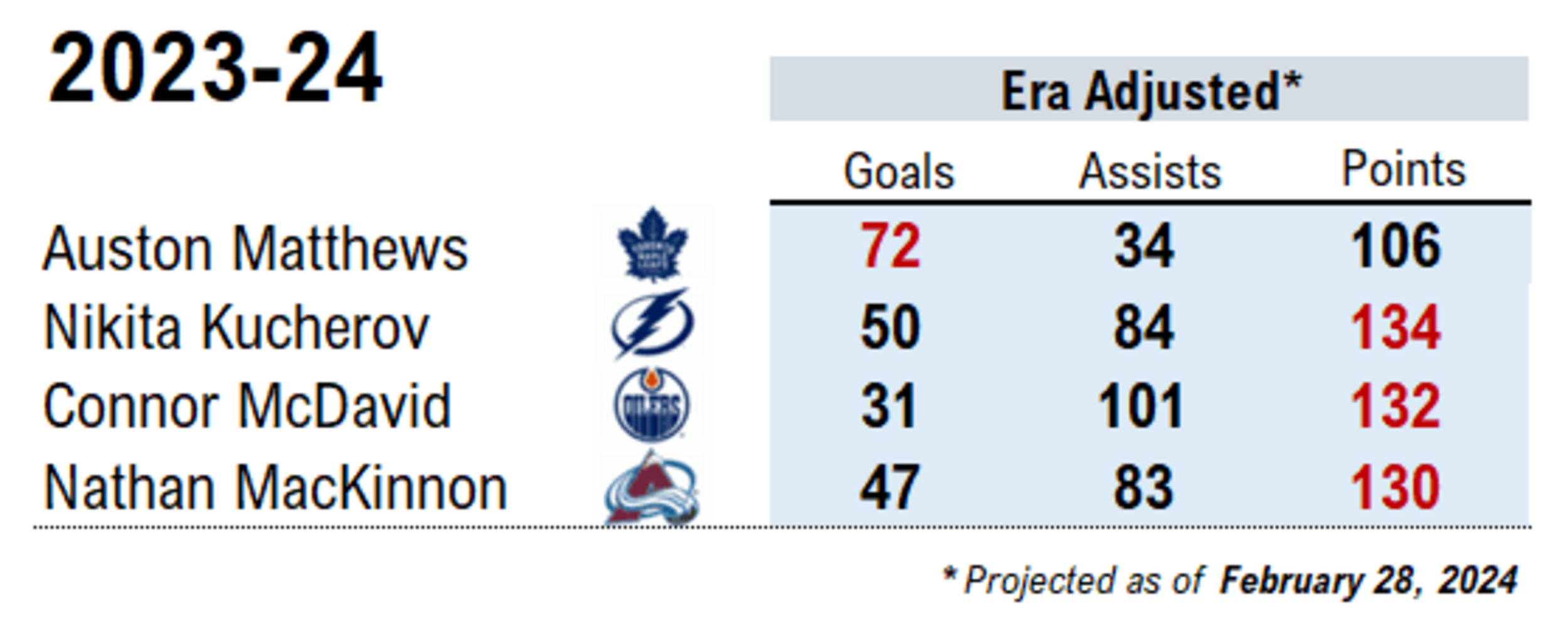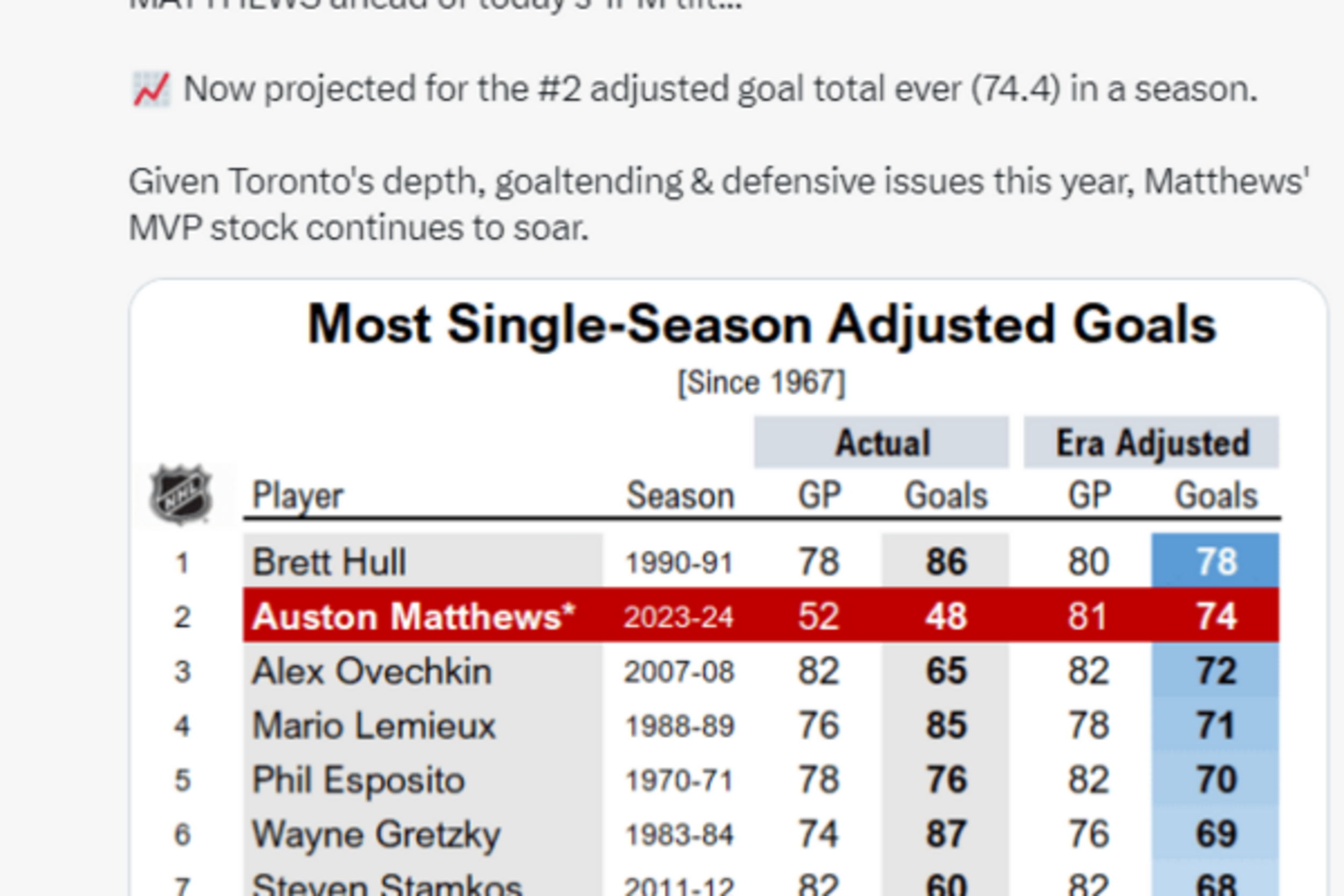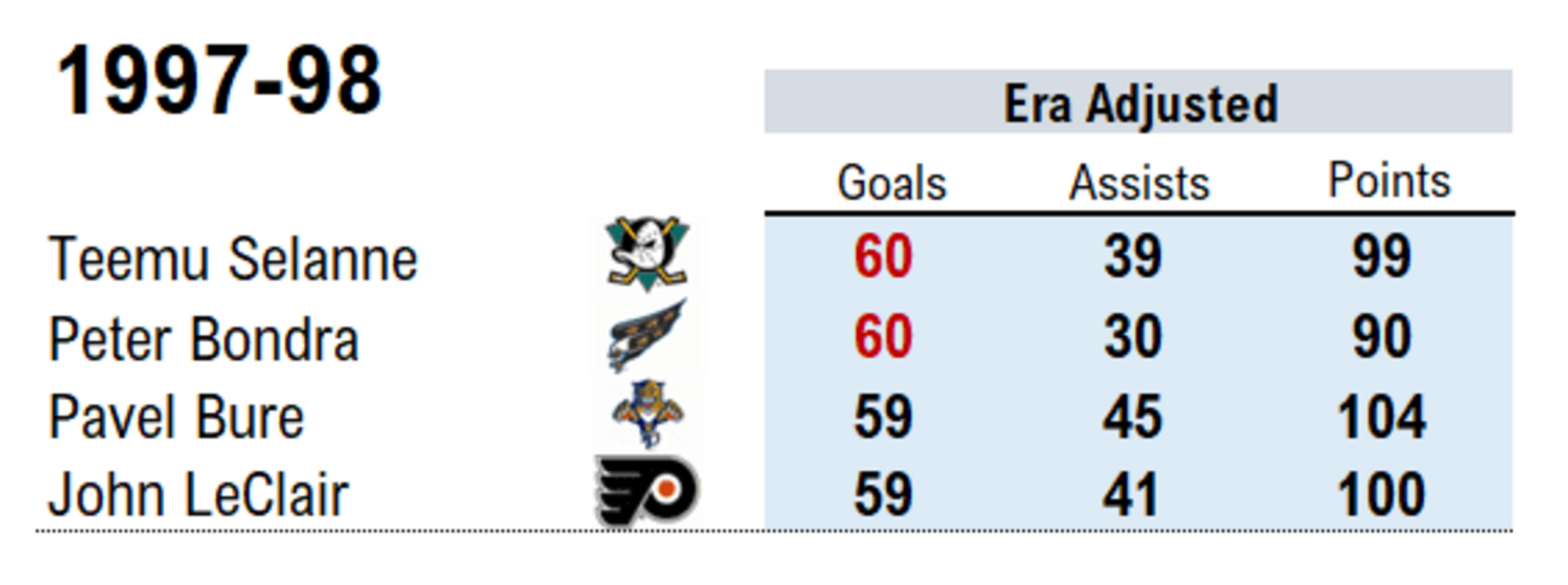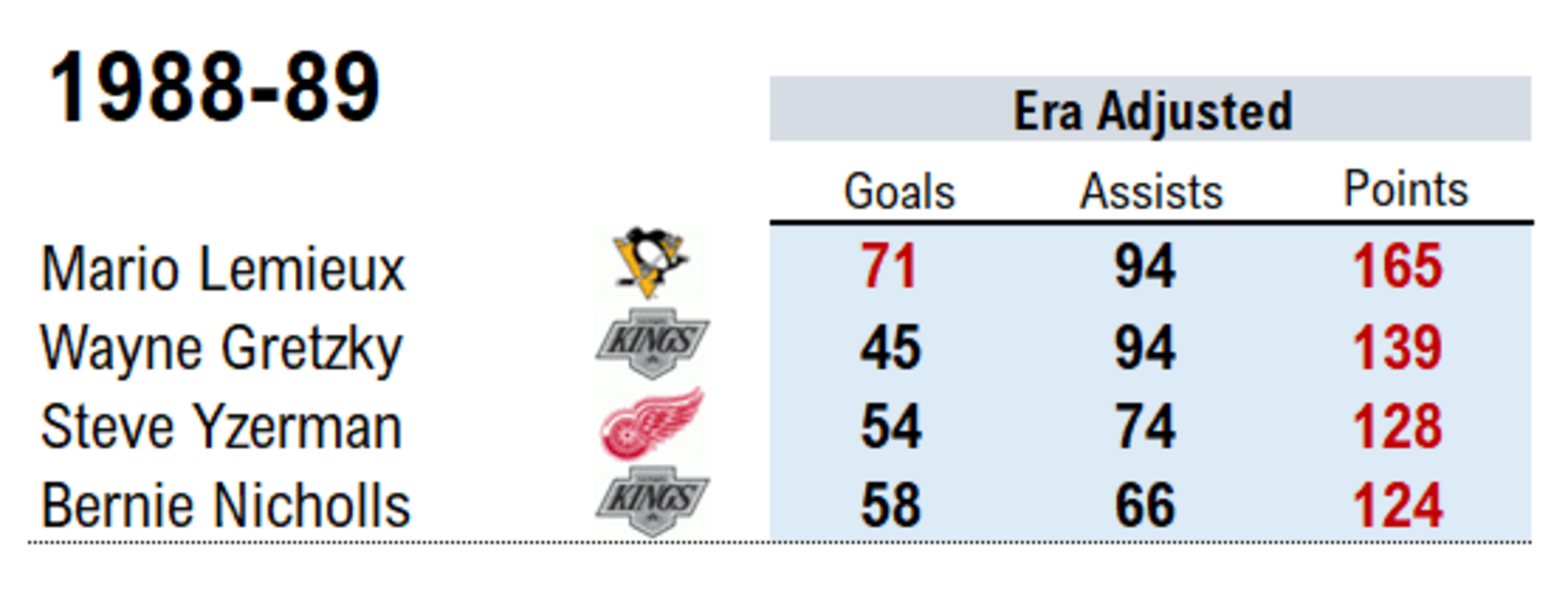
While the calendar only leaped to March overnight, the Hart Trophy race is sizzling. All season long, Auston Matthews, Connor McDavid, Nathan MacKinnon, and Nikita Kucherov have brought fans out of their seats. They’ve also managed to divide the hockey world on the definition of value.
Of course, the best thing we could all do is chill out. After all, award races often takes care of themselves. Hot or cold stretches from candidates and teams are inevitable. Puck luck ebbs and flows. Injuries happen. Lazy takes get dismantled. No, this won’t be another MVP debate.
Instead, we’re offering positivity. We’re uniting to celebrate the collective offensive dominance of this electric four-man band that’s played its greatest hits on repeat. We’re answering the question: Have four players ever dominated an NHL season like this before?
The Definition
Dominance can be a flimsy word. A great few months? 100 points? 50 goals? More? A big lead on the rest of the league? We need some goalposts to define it.
- Adjust for era: In 1992-93, an absurd 10 players had 120 points. Nice milestone, sure. But when that many goals are flying, it’s hardly special. So, we’ll need to era adjust each season to a climate of six goals per game and an 82-game schedule to seek legitimately outstanding performances.
- Post-expansion only: No disrespect to feats in the NHL’s formative years. But with the shorter schedules back then, it’s like calling a player’s pace in December a monster year. The league began playing at least 74 games in 1967-68 — this is a fair starting point.
-
Ignore defense: We’re taking a page from the San Jose Sharks’ playbook here and completely ignoring defensive play. Pre-analytics, it’s difficult to measure defense accurately, anyway. And besides, scoring is more fun.
Let’s define dominant as a forward reaching 60 goals or 120 points, adjusted to era. We’re on the hunt for seasons where four superstars approached these rare scoring levels.
The Star-Studded Seasons
The Present Day

Average goals per NHL game: 6.3
Power plays per game: 6.1
MVP: To be determined
While it’s easy to label recent achievements among the greatest ever for headlines, this is the real deal. The caveat, of course, is that the season’s only about 75% complete. These four guys still need to both stay healthy and maintain their scoring paces. And Kucherov may still be exhausted from the All-Star skills competition…
Matthews’ season is as jaw-dropping as it seems — it’s trending toward the second greatest goal-scoring year of all-time. Yes, better than the best of Mario Lemieux and Wayne Gretzky. So far, anyway. Even with a slight cooldown, Matthews should join Alex Ovechkin as the only era adjusted 70-goal scorer in 30+ years.

While no one should confuse assists for goals in value, McDavid is cooking something unprecedented for playmaking. If he can reach 100 adjusted assists, he’d join Gretzky (five times) as the only such performances in a full schedule. At their current rates, McDavid, Kucherov and MacKinnon would become the first trio in NHL history to hit 130 adjusted points each since The Great Depression. Impressive.
The Dead Puck Era

Average goals per NHL game: 5.3
Power plays per game: 9.3
MVP: Dominik Hasek
Ah, 1997-98. The first season where The Dead Puck Era officially moved in and squashed offense. For a few years, it looked more like an unwelcome but temporary guest. You know, the annoying guy your little sister dates in college that surely she’ll move on from? Well, this jerk stuck around for 20 years.
Scoring was so low in 1997-98 that league wide power play conversion fell to 15% — that’s like the entire league dressed up as the present-day Buffalo Sabres with the man advantage. Boring. The environment was so devastating to scoring that Jagr led the league with 102 points.
Somehow, four players hit the 50-goal mark, though. Relative to era, Selanne, Bondra, Bure and LeClair were essentially 60-goal scorers — the record books forever understating their brilliance.
Is this as dominant as 2023-24? Having four 59-goal scorers has never been matched. But even after we level the playing field, the low point totals won’t cut it.
The High-Flying 1980s

Average goals per NHL game: 7.5
Power plays per game: 10.1
MVP: Wayne Gretzky
This is a famous NHL season for scoring. Only six players have reached 150 points and it happened four times in 1988-89 (McDavid and Phil Esposito are the others). In a 21-team league, 22 players scored 40 goals… so, we’ve taken the requisite sledge-hammer to these inflated totals. They still hold up.
It was also one of the most famous narrative-driven MVP races, one that’s aged poorly.
Lemieux led the NHL in goals by 15, tied Gretzky in assists, and won the scoring title by 31 points. He led his closest teammate, Rob Brown, by 84 points! Pittsburgh went from sixth to second in the division and reached the playoffs after a six-year absence. But this was the year the Gretzky trade changed hockey — his first in Southern California. The Great One led the Kings to a 31-point improvement and rode the “I promised Mess I wouldn’t do this” wave to an iffy ninth and final Hart.
As for the quartet as a whole, it’s led by three Inner Circle Hall of Famers — though more of our 2023-34 stars may join McDavid in the club one day. Overall, 1988-89 bests 2023-24 by 52 adjusted points, a healthy margin. On the flip side, the current NHL is a melting pot of international talent, while 1988-89 was a Canadian-heavy league (76%) featuring some Americans and the odd European. The current season also doesn’t include teammates sharing points.
We’re going to the judges’ scorecard and they’re calling it… a split decision.
Closing Thoughts
We’re watching something special right now. The analysis shows just how special. It’s one of the two best years in NHL domination on record. So, why might this be the case?
A few factors for your consideration. Scoring has trickled up in the last decade. While all the information provided today was season adjusted, a more open environment and focus on skill lets the game’s elite separate themselves in a way unique from the recent Crosby/Ovechkin era. Power plays and 3-on-3 overtime have become greater areas of attention, states where elite players benefit relative to the rest of the league. This particular foursome plays big minutes — all are top 10 in average ice time among forwards. But stars have always played a lot and feasted on power plays. It’s the individual circumstances that are equally intriguing.
Kucherov’s aging Lightning have been dismissed as has-beens. MacKinnon’s Avalanche have become top heavy and increasingly dependent on him. Matthews’ Leafs stumbled for months, his multi-goal efforts carrying them through uncertain times in Toronto’s fish bowl. McDavid’s Oilers started out in embarrassing fashion, costing their coach his job and requiring a record-setting gear to emerge as contenders.
Each of the four have had no shortage of personal motivation to rise up this year. Forget a chip on their shoulders, these dudes are carrying full cans of Pringles.
But no matter the reasons, watching all-world talent at the peak of their powers is part of why we love hockey. So, settle in, get your popcorn, pick your MVP biases, and please enjoy the show.
Follow @AdjustedHockey on X; Data from Hockey-Reference.com
- Who is the Best American in NHL History?
- Finally reunited with Pittsburgh, Jaromir Jagr was Connor McDavid in the 1990s
- Will Marc-Andre Fleury be the Last Goaltender to 500 Wins?
- Can Auston Matthews Catch Alex Ovechkin and Wayne Gretzky in Goals?
- Connor McDavid, Leon Draisaitl & the Greatest Duos of All-Time
More must-reads:
- Panthers advance by eliminating Florida rival Lightning
- Stars tie series with another road win over Golden Knights
- The 'Most career passing touchdowns' quiz
Breaking News
Customize Your Newsletter
 +
+
Get the latest news and rumors, customized to your favorite sports and teams. Emailed daily. Always free!

